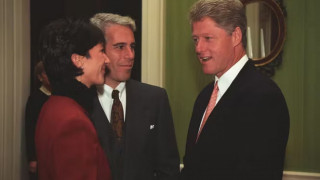
Iran’s Fordo Nuclear Plant (Social Media)
Iran-Israel Conflict: Amid increasing hostilities between Israel and Iran, a key Iranian nuclear site—Fordow Fuel Enrichment Plant—remains untouched despite repeated Israeli attacks elsewhere. Tucked deep beneath a mountain, this facility is strategically built to resist even the most powerful airstrikes, making it an unparalleled challenge for Israeli military planners.
The Fordow plant is not just another nuclear facility—it’s a high-security underground bunker located approximately 160 kilometers from Tehran and around 30 kilometers from Qom. Operated under the command of the Islamic Revolutionary Guard Corps (IRGC), it was constructed as part of Iran’s efforts to strengthen its nuclear infrastructure in secrecy.
What makes Fordow nearly untouchable is its depth. Built into the rock at depths ranging between 80 and 300 feet, it’s shielded from conventional bombs and even most precision-guided weapons.
Iran began building the Fordow site covertly around 2006, reportedly under the controversial Amad Project, which focused on developing a nuclear weapons capability. For years, the facility remained hidden until Western intelligence agencies exposed it in 2009. Under international pressure, Iran later admitted its existence to the International Atomic Energy Agency (IAEA).
According to military analysts, the only known weapon capable of penetrating Fordow’s defenses is the GBU-57A/B Massive Ordnance Penetrator (MOP)—a specialized U.S. bunker-buster bomb weighing over 13.6 metric tons. This massive device can breach reinforced concrete and rock layers up to 200 feet deep.
Even then, a single bomb may not suffice. A series of strikes might be required to compromise Fordow’s innermost chambers. Currently, Israel lacks access to this class of munitions.
Apart from its subterranean location, Fordow is also heavily defended by Russian-made S-300 surface-to-air missile systems, along with other advanced defense technology. These systems form a formidable aerial shield, reducing the odds of a successful external attack even further.
Inside, the plant houses thousands of centrifuges, including advanced IR-6 models, capable of enriching uranium to high levels of purity.
Under the 2015 Iran Nuclear Deal (JCPOA), Iran had agreed to limit Fordow’s use to non-military, scientific applications. However, following the U.S. exit from the deal in 2018, Iran resumed high-level uranium enrichment.
As of now, the facility is producing uranium enriched up to 60% purity, inching dangerously close to the 90% mark required for nuclear weapons. Experts estimate that Fordow can produce enough enriched uranium every quarter to construct up to four nuclear warheads, if weaponized.
In the backdrop of Israel's aggressive stance and Iran’s advancing nuclear capabilities, Fordow has emerged as a symbol of resilience and defiance. For Iran, it represents scientific independence and strategic deterrence. For Israel and the West, it's a nuclear nightmare buried under a mountain.
Unless diplomatic interventions resume or new military technologies emerge, the Fordow facility will continue to shape the strategic calculus of the Middle East—and may eventually become the epicenter of a future conflict.










Copyright © 2025 Top Indian News
